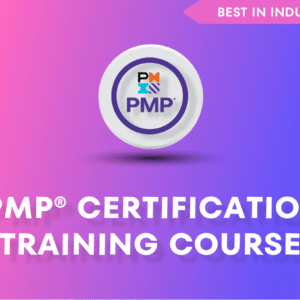*“Marketing is no longer about the stuff that you make, but about the stories you tell.”
In today’s digital age, a well-crafted digital marketing strategy is no longer optional—it’s essential. Whether you run a small business or a large enterprise, your customers are online, and your brand’s success depends on your ability to reach, engage, and convert them through digital channels.
But where do you start? Building a digital marketing strategy may seem overwhelming, but with a step-by-step approach, it becomes manageable and highly effective. This article breaks it down for you—from goal-setting and audience research to execution and optimization.
—
## **1. Understand What Digital Marketing Strategy Means**
A **digital marketing strategy** is a comprehensive plan that outlines how your business will achieve its marketing goals using digital channels such as search engines, social media, email, and your website. It covers everything from content creation to data analysis and is aligned with your business’s long-term objectives.
—
## **2. Define Your Business Goals**
Start with clear, measurable goals. What do you want your digital marketing efforts to accomplish?
### Common goals include:
* Increasing brand awareness
* Generating leads
* Boosting website traffic
* Growing online sales
* Engaging current customers
Each goal should be smart Measurable specifice and Time bounded.
—
## **3. Know Your Target Audience**
Understand your audience is beneficial of any successful strategy. Consider factors such as:
* **Demographics** (age, gender, location)
* **Psychographics** (interests, values, lifestyles)
* **Pain points** and **needs**
* **Buying behaviors**
Creating **buyer personas**—fictional representations of your ideal customers—can help tailor your messaging and campaigns effectively.
—
## **4. Conduct a Competitor Analysis**
Determined your competitor can provide insights into what works in your industry. Look at:
* Their website and user experience
* Social media presence
* Types of content they publish
* Paid ads they run
* Customer engagement levels
Tools like **SEMrush**, **Ahrefs**, and **SimilarWeb** can offer detailed competitor data.
—
## **5. Choose Your Digital Marketing Channels**
Not every platform will be correct for your business. choose your channels based on where your audience spend their time and how they prefer to avail.
### 📊 **Channel Comparison Table**
| **Channel** | **Best For** | **Pros** | **Cons** |
| ——————– | ———————————- | ————————————– | ————————————————– |
| Website/SEO | Organic traffic, brand credibility | Long-term traffic, cost-effective | Takes time to rank, requires ongoing effort |
| Social Media | Brand awareness, engagement | Direct interaction, viral potential | Requires constant content and community management |
| Email Marketing | Lead nurturing, customer retention | High ROI, personalized communication | Requires a clean, active list |
| Paid Ads (PPC) | Quick visibility, lead generation | Immediate results, measurable | Can be costly, needs regular optimization |
| Content Marketing | Thought leadership, SEO | Builds authority, drives organic leads | Time-consuming, content must be high-quality |
| Influencer Marketing | Expanding reach, trust-building | Leverages existing audiences | Results can vary, hard to measure ROI |
—
## **6. Create Valuable Content**
Content is the heart of digital marketing. Create and distribute content that solves your audience’s problems, educates them, and showcases your expertise.
### Content types to consider:
* Blog posts
* Videos
* Infographics
* Podcasts
* Webinars
* E-books
Make sure your content aligns with your audience’s needs and each stage of the buyer’s journey: **Awareness, Consideration, and Decision**.
—
## **7. Develop a Content Calendar**
Consistency is key. A **content calendar** help you plan, schedule, and manage your title distribution around different platforms.
Tips for an effective content calendar:
* Schedule posts around industry events or holidays
* Repurpose content into different formats
* Balance promotional, educational, and entertaining content
* Use tools like **Trello**, **Asana**, or **Buffer**
—
## **8. Optimize for Search Engines (SEO)**
To maximize your reach, ensure your content and website are optimized for search engines.
Key SEO elements:
* **Keyword research** to find what your audience is searching for
* **On-page SEO** (titles, meta descriptions, header tags)
* **Technical SEO** (site speed, mobile-friendliness)
* **Link building** (internal and external)
SEO is a long-term game but yields high returns over time.
—
## **9. Launch Paid Advertising Campaigns**
Paid ads help you reach your audience quickly. Platforms like **Google Ads**, **Facebook Ads**, and **LinkedIn Ads** allow you to target specific demographics, behaviors, and interests.
Types of paid campaigns:
* **Search ads** (text ads on Google)
* **Display ads** (banner ads on websites)
* **Social media ads**
* **Video ads** (YouTube, Instagram Reels)
Set a clear budget, A/B test creatives, and monitor performance regularly.
—
## **10. Track and Measure Performance**
Digital marketing is not a “set it and forget it” task. Use analytics tools to track progress and make data-driven decisions.
### Tools you can use:
* **Google Analytics** – tracks website traffic and user behavior
* **Google Search Console** – monitors search performance
* **Meta Business Suite** – for Facebook and Instagram insights
* **HubSpot** or **Mailchimp** – for email marketing metrics
Track metrics like:
* Website visits
* Bounce rates
* Conversion rates
* Cost per click (CPC)
* Return on ad spend (ROAS)
* Social media engagement
—
## **11. Test, Tweak, and Optimize**
Your first strategy won’t be perfect—and that’s okay. The key is to continuously test and optimize.
What to test:
* Headlines and subject lines
* Images and videos
* Calls-to-action
* Land page
* Ad copy and target
A/B testing helps you understand what resonates best with your audience and improve results over time.
—
## **Conclusion**
Building a digital marketing strategy for your business isn’t about doing everything at once. It’s about **understanding your goals, knowing your audience, choosing the right tools**, and adapting based on results. The beauty of digital marketing is its flexibility—you can start small, measure everything, and scale quickly.





